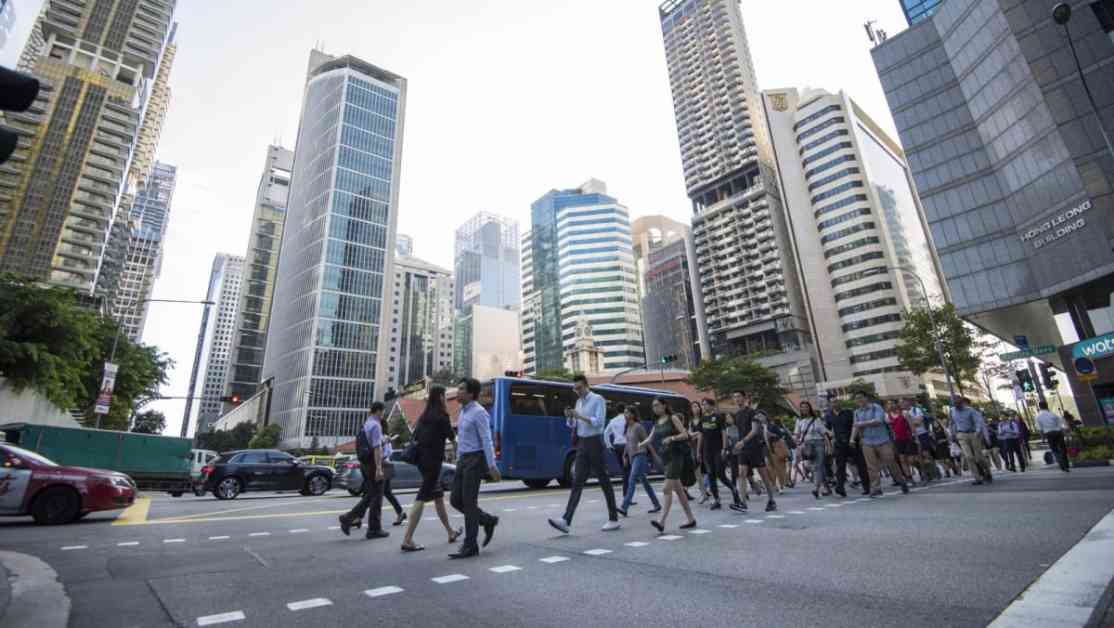Singapore’s Core Inflation on the Rise
After six months of waiting, Singapore’s core inflation finally saw a year-on-year increase in April. This rise, excluding private transport and accommodation, reached 0.7 percent, surpassing the previous month’s reading of 0.5 percent. Economists had predicted a median forecast of 0.5 percent in a Reuters poll. The Monetary Authority of Singapore (MAS) and the Ministry of Trade and Industry (MTI) announced that the growth in April was primarily due to higher inflation in services and food, which offset lower retail and other goods inflation.
In terms of month-on-month changes, core inflation experienced a 0.5 percent increase. Overall inflation remained at 0.9 percent in April as the higher core inflation was counteracted by lower accommodation and private transport inflation. MAS and MTI highlighted that Singapore’s imported inflation is expected to remain at a moderate level. They mentioned that amidst slowing global demand and ample supply conditions, global crude oil prices are projected to decrease compared to 2024. Additionally, they stated that food commodity price hikes are expected to remain under control. Despite potential inflationary impacts from trade conflicts in other economies, MAS and MTI believe that Singapore’s import prices will be more affected by weaker global demand, leading to a disinflationary effect.
Looking ahead, both core inflation and overall inflation are forecasted to average between 0.5 percent and 1.5 percent in 2025. Services inflation rose from 0.6 percent in March to 1.1 percent in April, attributed to higher health insurance costs and a smaller decline in airfares. Food inflation also saw a slight increase, rising from 1.3 percent in March to 1.4 percent in April, mainly due to non-cooked food price hikes. On the other hand, retail and other goods inflation dropped by 1.2 percent after a 0.5 percent decrease in March. Factors contributing to this decline included lower clothing and footwear prices, a sharper decrease in the cost of medicines and health products, and an increase in water prices.
Electricity and gas inflation remained steady at 3.5 percent, while private transport inflation eased from 2.1 percent in the previous month to 1.3 percent in April. This decrease was driven by a smaller rise in car prices and a more significant decline in petrol prices. Accommodation inflation also dropped from 1.4 percent in March to 1.1 percent in April, primarily due to smaller increases in housing rents and maintenance and repair costs.
Although core inflation saw its first annual increase since September last year, remaining below 1 percent for the fourth consecutive month raises some concerns. MAS and MTI anticipate gradual growth in unit labor costs as nominal wage growth slows down, paired with increasing productivity. Government subsidies for essential services are expected to continue dampening services inflation. The authorities emphasized that the risks to inflation are skewed towards the downside due to uncertainties in the external environment.


























